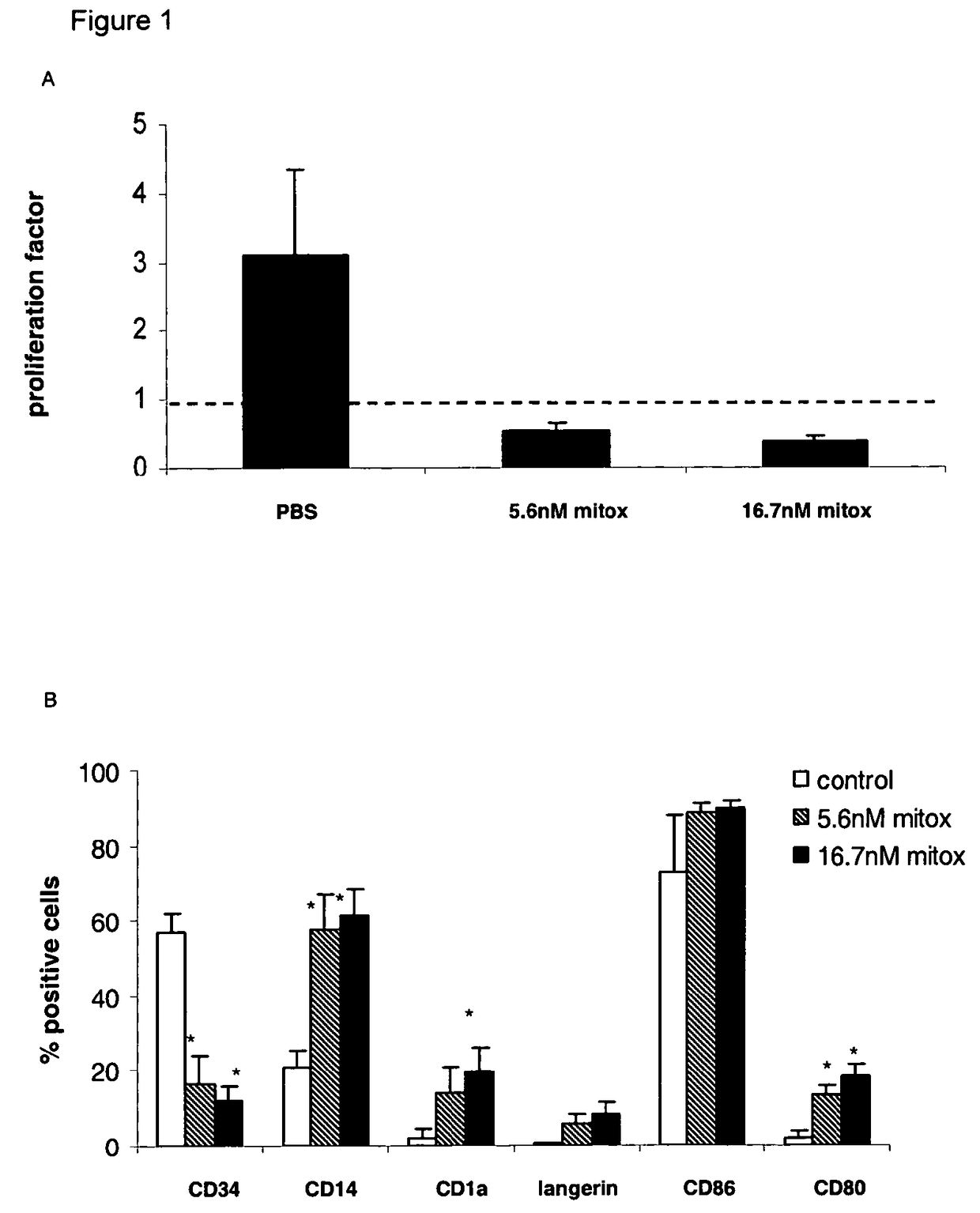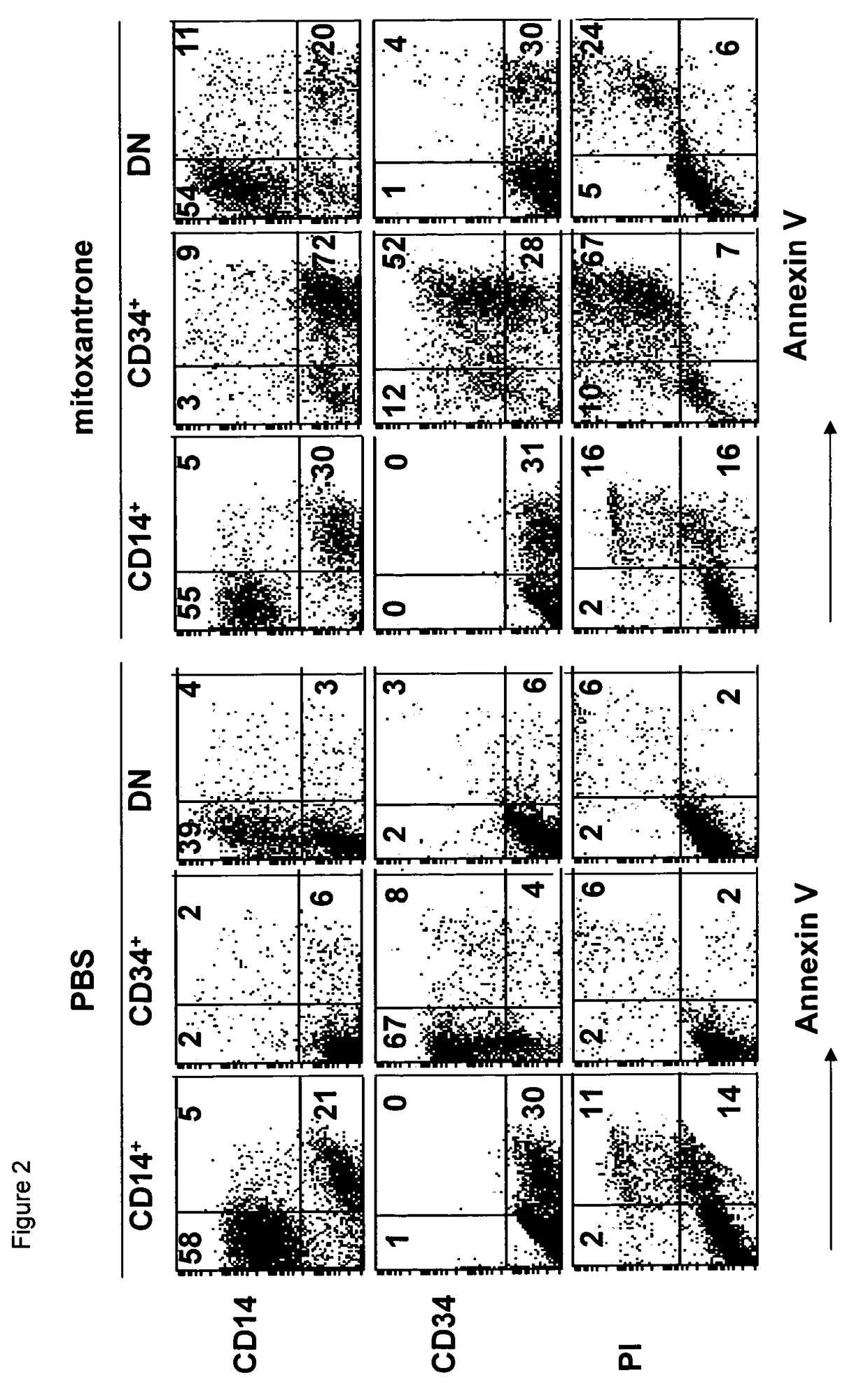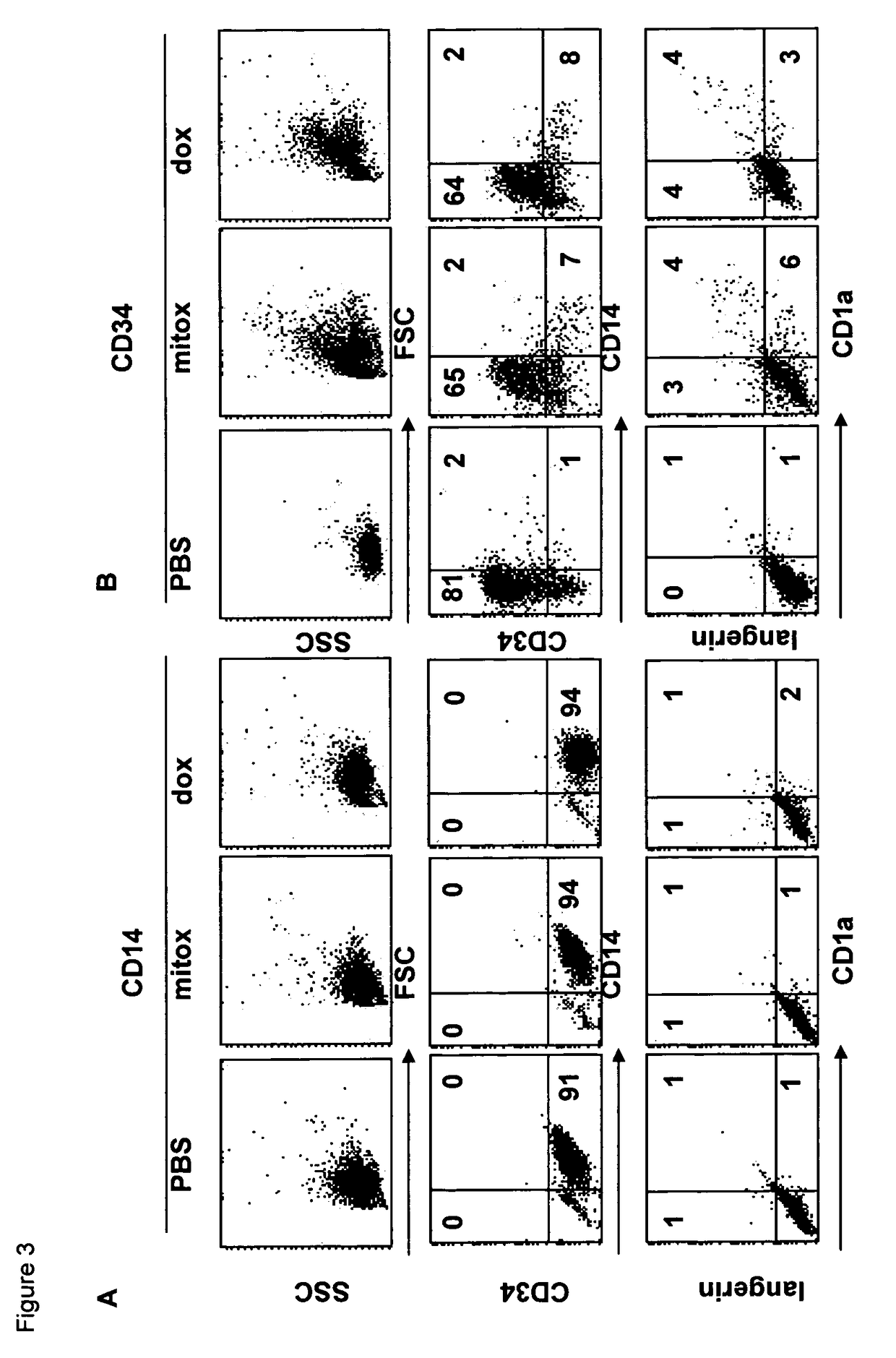Method for inducing and accelerating cells
a cell and induction technology, applied in the field of inducing and accelerating cells, can solve the problems of long culturing time, short half life, redundancy, etc., and achieve the effect of shortening the period of tim
- Summary
- Abstract
- Description
- Claims
- Application Information
AI Technical Summary
Benefits of technology
Problems solved by technology
Method used
Image
Examples
example 1
Materials and Methods
Chemicals:
[0109]All chemicals and drugs were obtained from Sigma Chemical Co. (St. Louis, Mo.) except for Ko-143 which was kindly provided by Dr. Allen (Netherlands Cancer Institute, Amsterdam, The Netherlands) and has been described before (van Loevezijn A., (2001) Bioorg. Med. Chem. Lett. 11, 29-32) and doxorubicin, which was purchased from Farmitalia Carlo Erba (Brussels, Belgium).
Cell Culture:
[0110]The AML-derived CD34+ MUTZ3 cell line was cultured as described before (Masterson A. J. (2002) Blood 100, 701-703.). In brief, MUTZ3 progenitors were cultured in MEM-alpha (Minimum essential medium, Gibco) containing 20% fetal calves serum (FCS), 100 IU / ml sodium-penicillin, 100 microg / ml streptomycin, 2 mM L-glutamine (pen / strep / glut), 50 microM beta-mercaptoethanol (2ME) and 10% 5637 conditioned medium (MUTZ3 routine medium) in 12-well plates (Co-star) at a concentration of 0.2 million cells / ml and were passaged twice weekly. LC were cultured in MEM-alpha contai...
example 2
Sensitivity of MUTZ3 Progenitor Cells to Mitoxantrone
[0118]MUTZ3 progenitor cells were analyzed for their sensitivity to the cytostatic drug mitoxantrone. This drug is still being used in the clinic to treat several cancers or other diseases like multiple sclerosis and has been described to be a substrate for MDR-related ABC transporter. A 96 hour cytotox assay (Trypan blue exclusion) was performed to determine the IC50 value for mitoxantrone on MUTZ3 progenitors. MUTZ3 progenitor cells were sensitive to mitoxantrone with an IC50 value of 1.5±0.5 nM (n=3). (An example of such trypan blue assay is: place a suitable volume of a cells suspension in appropriate tube add an equal volume of 0.4% Trypan blue and gently mix, let stand for 5 minutes at room temperature. Place 10 μl of stained cells in a hemocytometer and count the number of viable (unstained) and dead (stained) cells. Calculate the average number of unstained cells in each quadrant, and multiply by 2*104 to find cells / ml. Th...
example 3
Mitoxantrone Induces Differentiation of MUTZ3 Progenitors
[0119]Studying the cytotoxic effects of mitoxantrone on the MUTZ3 progenitors, obvious morphological changes were observed at a concentration of 5.6 nM (IC60) and 16.7 nM (IC70) mitoxantrone. Hence, MUTZ3 progenitors were cultured for 72 hours in the presence of these concentrations and were analyzed for expansion (FIG. 1A) and for DC marker expression (FIG. 1B). The analysis revealed that, though dramatically compromising cell division, these doses of mitoxantrone drove the surviving MUTZ3 progenitors to differentiation, as there was an altered CD34+ / CD14+ ratio in favor of the differentiating CD14+ subset, mitoxantrone-treatment induced expression of the LC-specific markers CD1a and Langerin and increased expression levels of the costimulatory molecules CD86 and CD80 (FIG. 1B). Similar experiments were carried out with the drug doxorubicin. Like mitoxantrone, the IC70 concentration of doxorubicin (˜100 nM) on MUTZ3 induced L...
PUM
| Property | Measurement | Unit |
|---|---|---|
| concentration | aaaaa | aaaaa |
| concentration | aaaaa | aaaaa |
| concentration | aaaaa | aaaaa |
Abstract
Description
Claims
Application Information
 Login to View More
Login to View More - R&D
- Intellectual Property
- Life Sciences
- Materials
- Tech Scout
- Unparalleled Data Quality
- Higher Quality Content
- 60% Fewer Hallucinations
Browse by: Latest US Patents, China's latest patents, Technical Efficacy Thesaurus, Application Domain, Technology Topic, Popular Technical Reports.
© 2025 PatSnap. All rights reserved.Legal|Privacy policy|Modern Slavery Act Transparency Statement|Sitemap|About US| Contact US: help@patsnap.com



